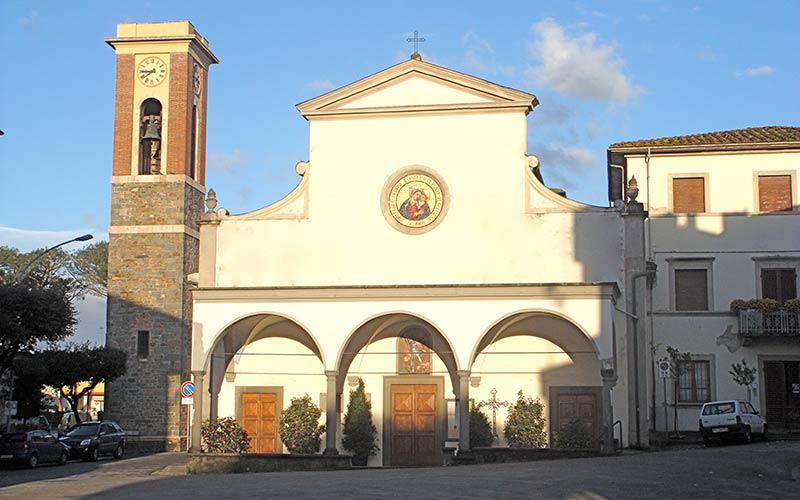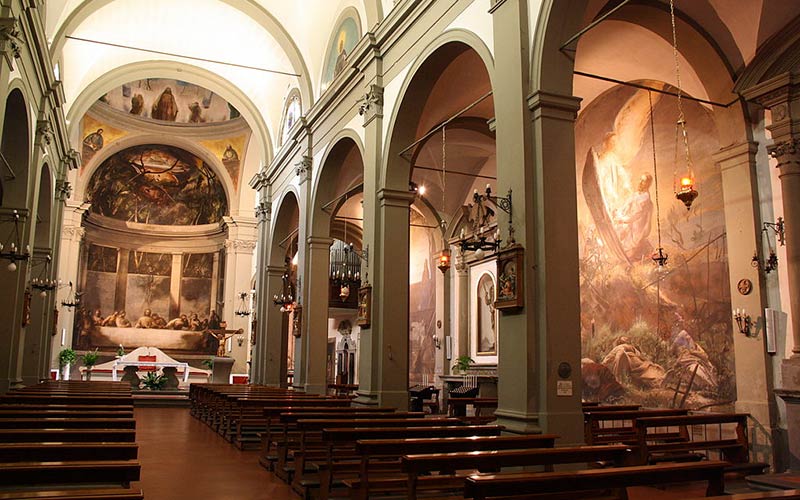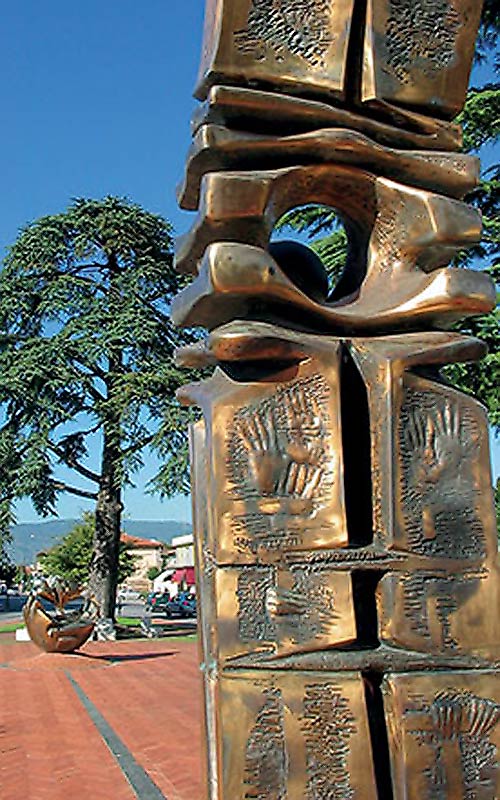This town built on the river Pescia reaches the northern tip of the Padule Marshland. It was built fairly recently, and all the area had been drained several times. Originally a joint municipality with the town of Buggiano, it took quite an advantage from the government and power on the territory from the Dukes of Lorraine, and became autonomous in 1883.

L’arte sacra di Pietro Annigoni
The main monument is the Church of San Michele Arcangelo, situated in the pretty town prevalent square. Built in the 17th century it was altered in the 19th century and has a broad porch spanning the façade, but the church is worldwide famous for the truly relevant cycle of frescoes from Pietro Annigoni, painted between 1967 and 1988. This work, one of the best from the artist, covers over 350 squared metres of walls, and describes many scenes from the Passion of Christ, and, furthermore, some interesting scenes from the Apocalypse, lead to an end by students of the artist, after his death.

A small museum is kept in the sacristy, with sacred artworks, furnishing and vestment dating from 17th to 19th centuries.
Jorio Vivarelli
 To be noted the artwork of Jorio Vivarelli, the “memorial to the victims of all wars”, located in Piazza Banditori: a remarkable bronze complex describing the victory of life over death.
To be noted the artwork of Jorio Vivarelli, the “memorial to the victims of all wars”, located in Piazza Banditori: a remarkable bronze complex describing the victory of life over death.
